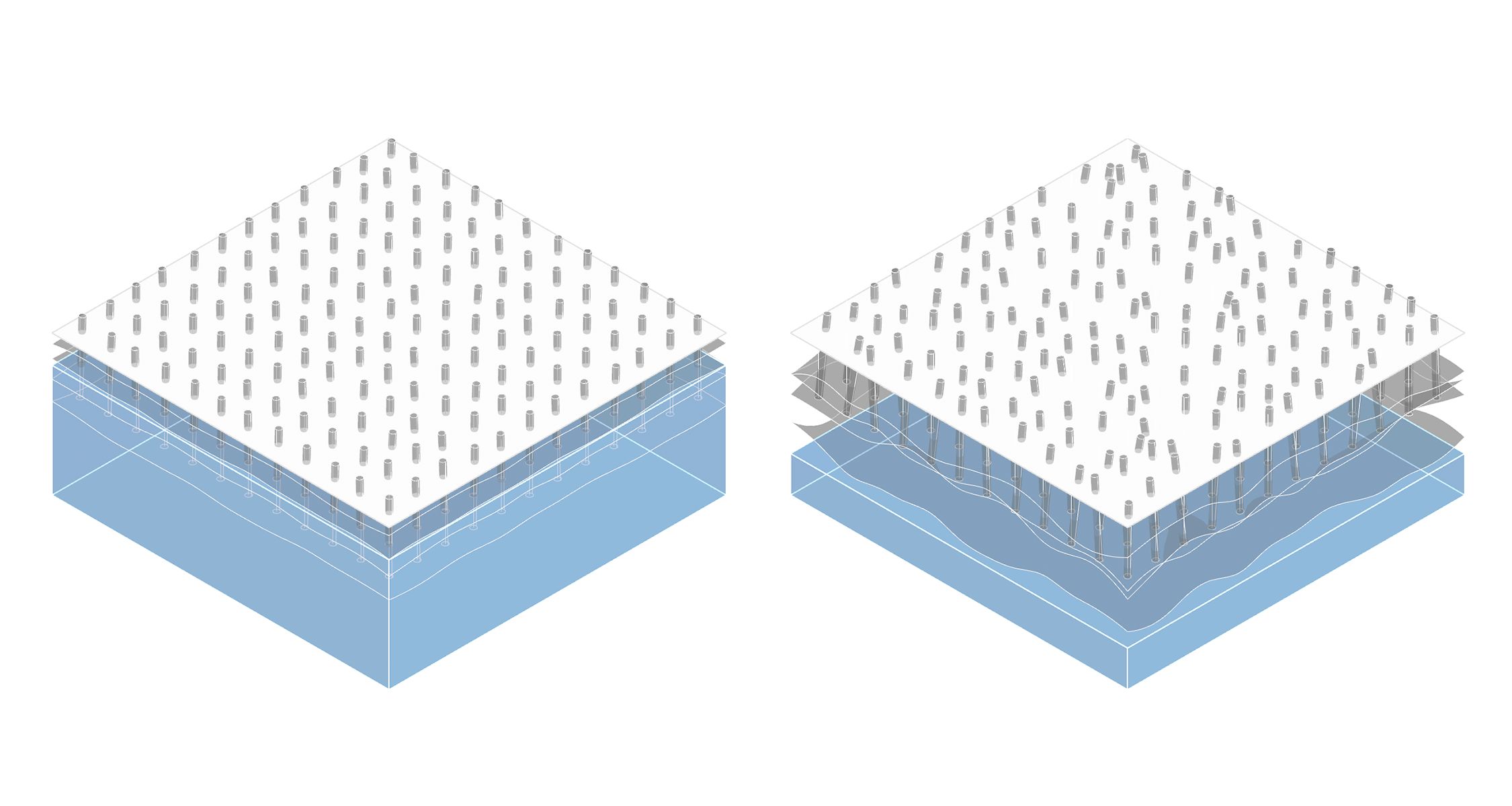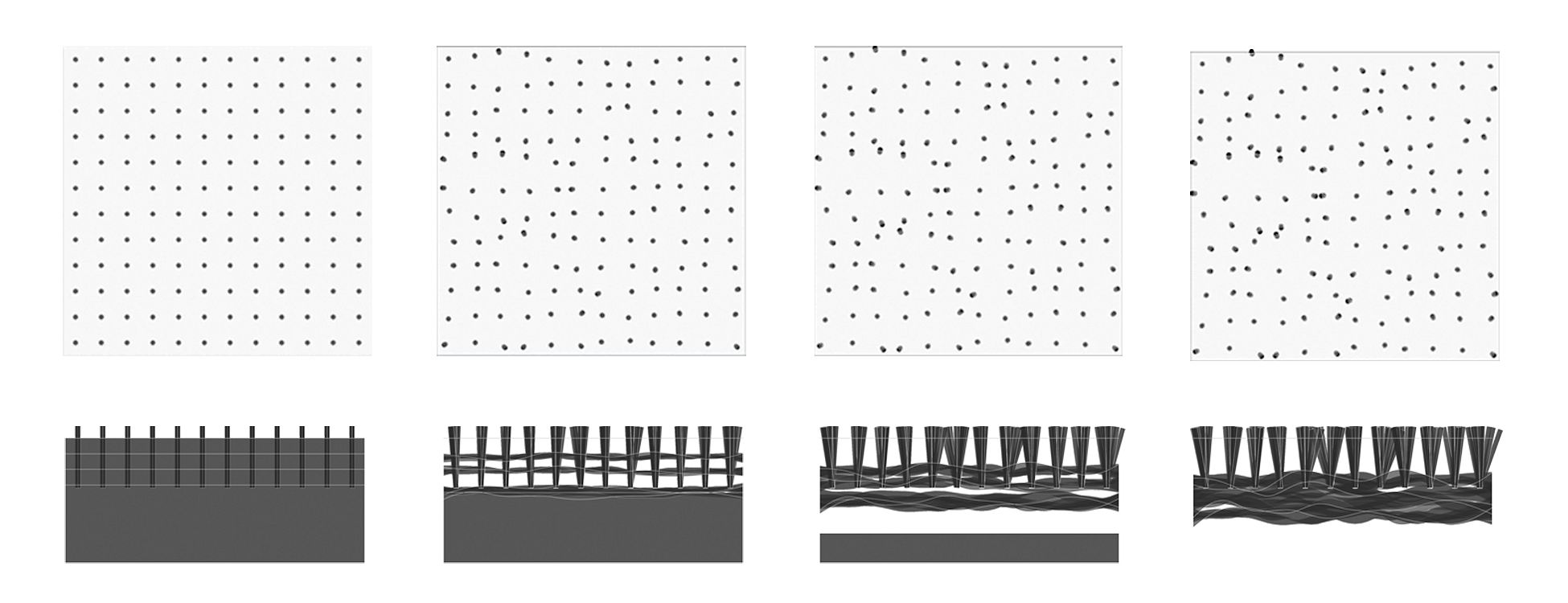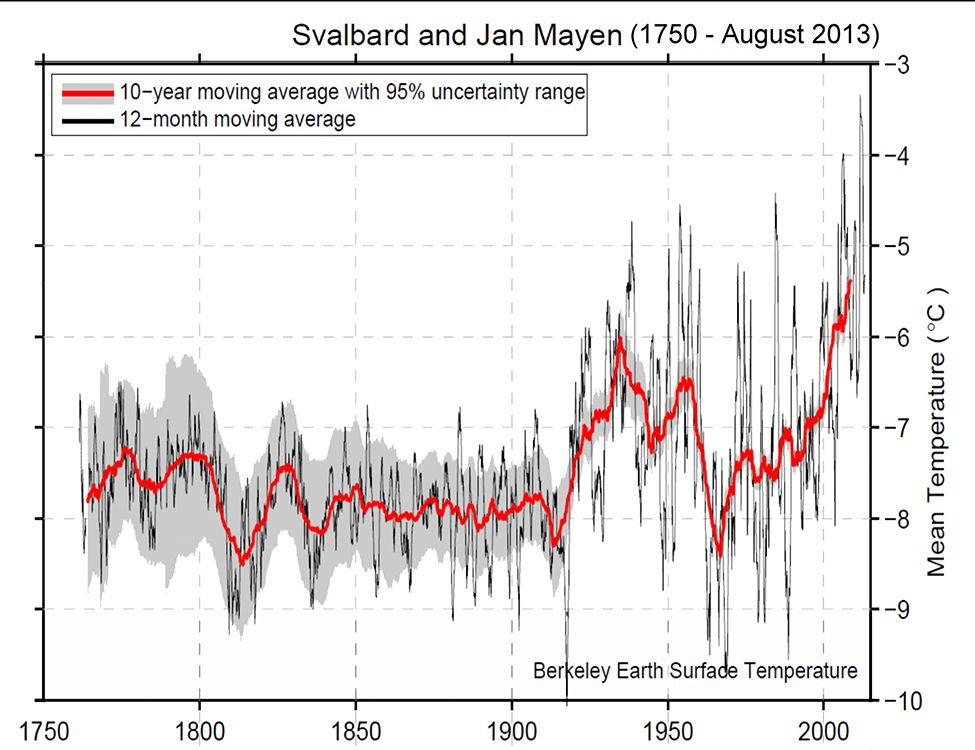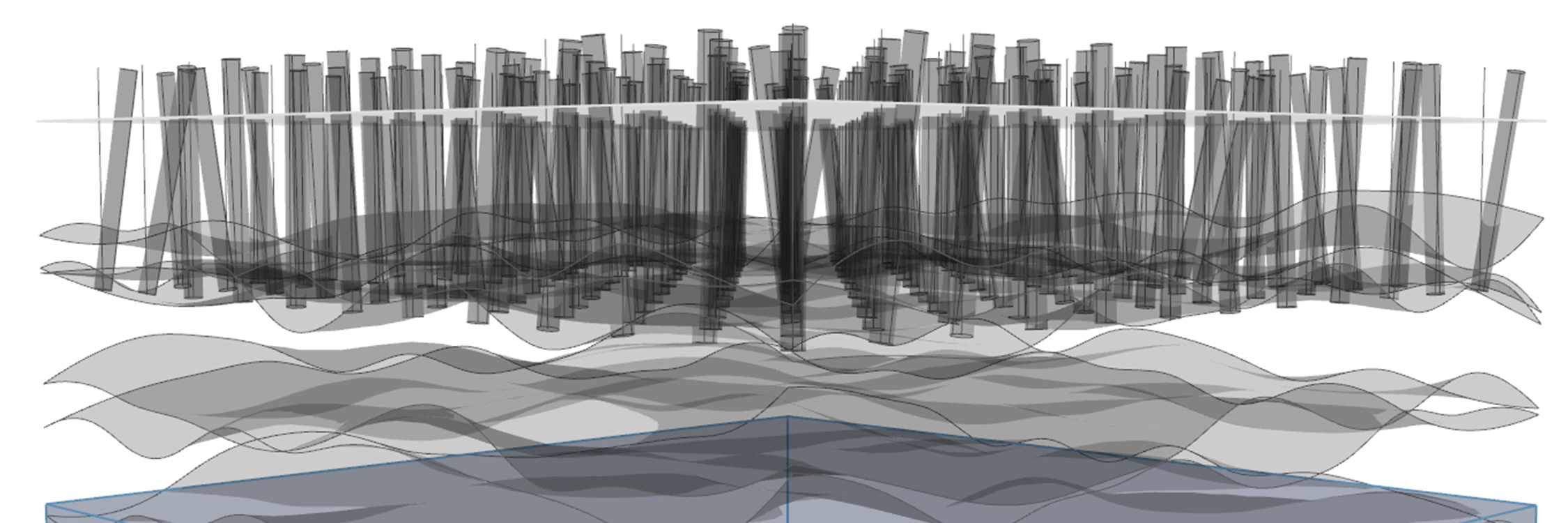Shifting Frozen Grounds
Foundational Disruption of Melting Permafrost

The city of Longyearbyen in Svalbard is the northernmost continuously inhabited settlement in the world. In addition, it holds the distinction of being the city that is currently experiencing climate change at the most extreme rate. The last few decades have brought rapidly rising temperatures have caused the permafrost to thaw at an alarming rate, which causes the ground to shift irregularly. To anticipate the precarity created by the melting ground this, most structures in Svalbard rest on deep piles that are driven into the ground to support the structures. Even so, temperatures have recently risen much faster than expected, resulting in the the foundation of many of Svalbard’s buildings becoming compromised. Due to this, many buildings have had to be torn down or moved. In their absence, they leave the remnants of their pylons jutting out of the ground at irregular heights and angles. The geometric distortions of the tops of the piles above ground are visible markers and measures of climate change. Through visualizing and studying them, we can understand how the invisible layers of soil below the ground may be thawing and shifting.
This project attempts to model and recreate the behavior of the melting permafrost in the ground while approximating its gradual disruptional effects on the types foundational pylons used in Longyearbyen.



